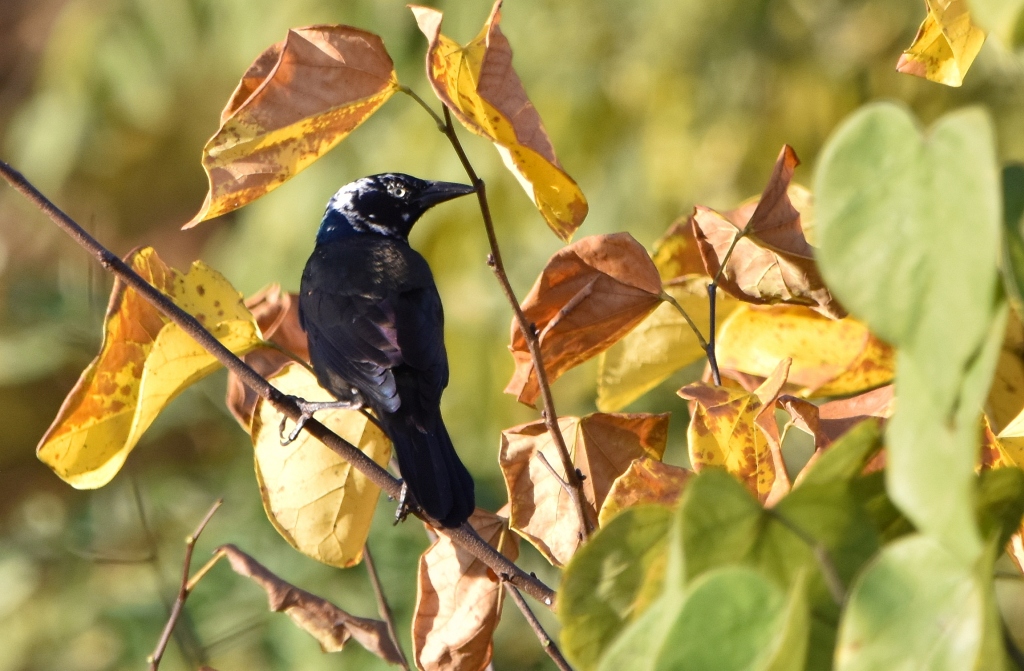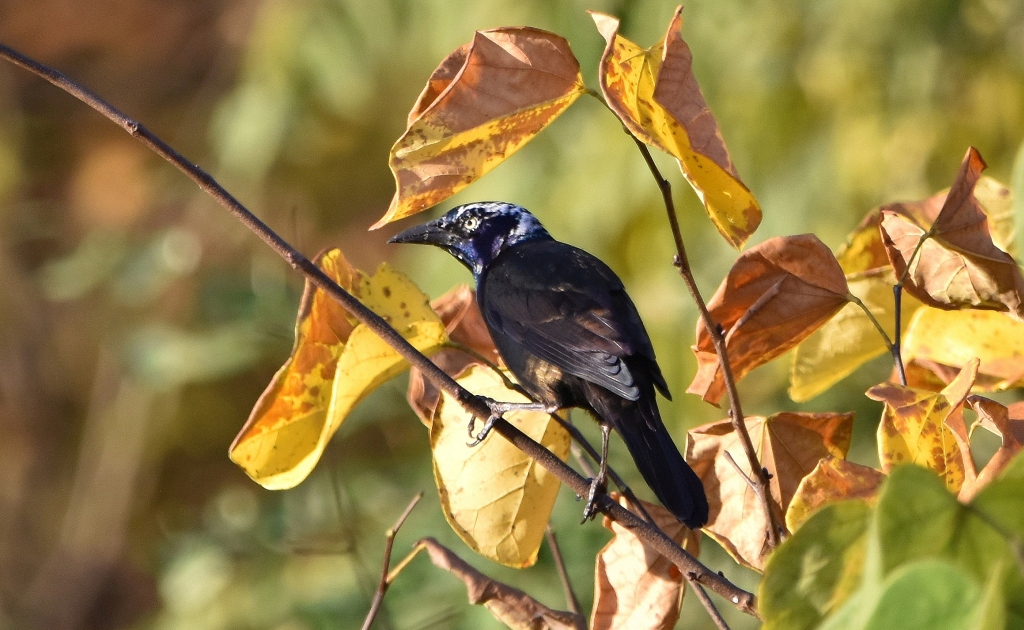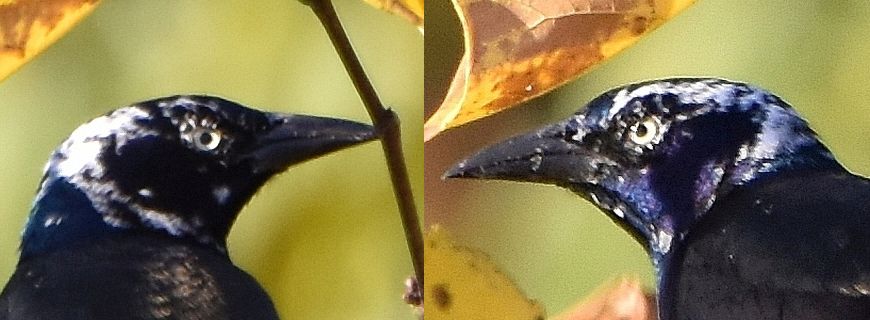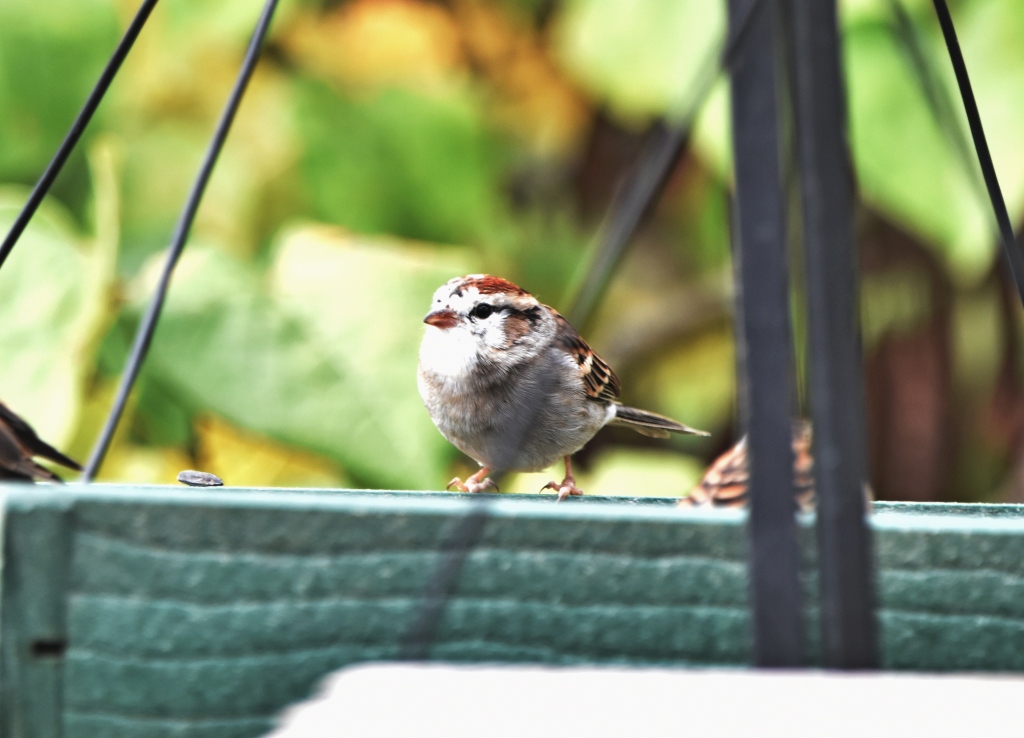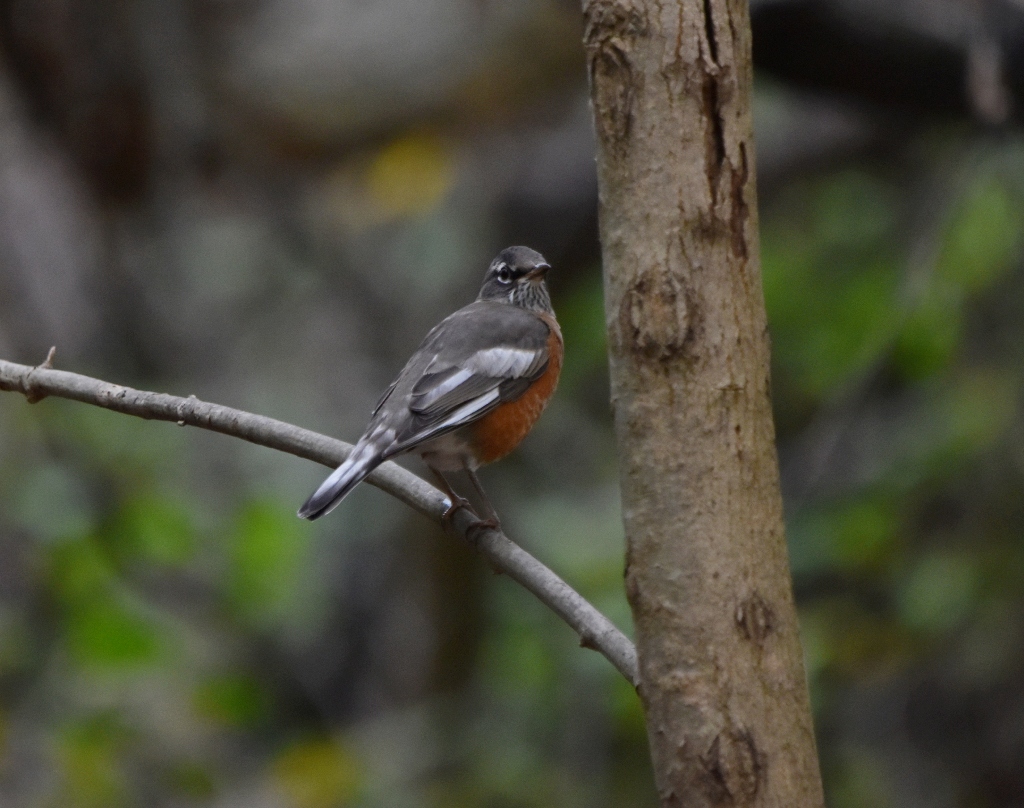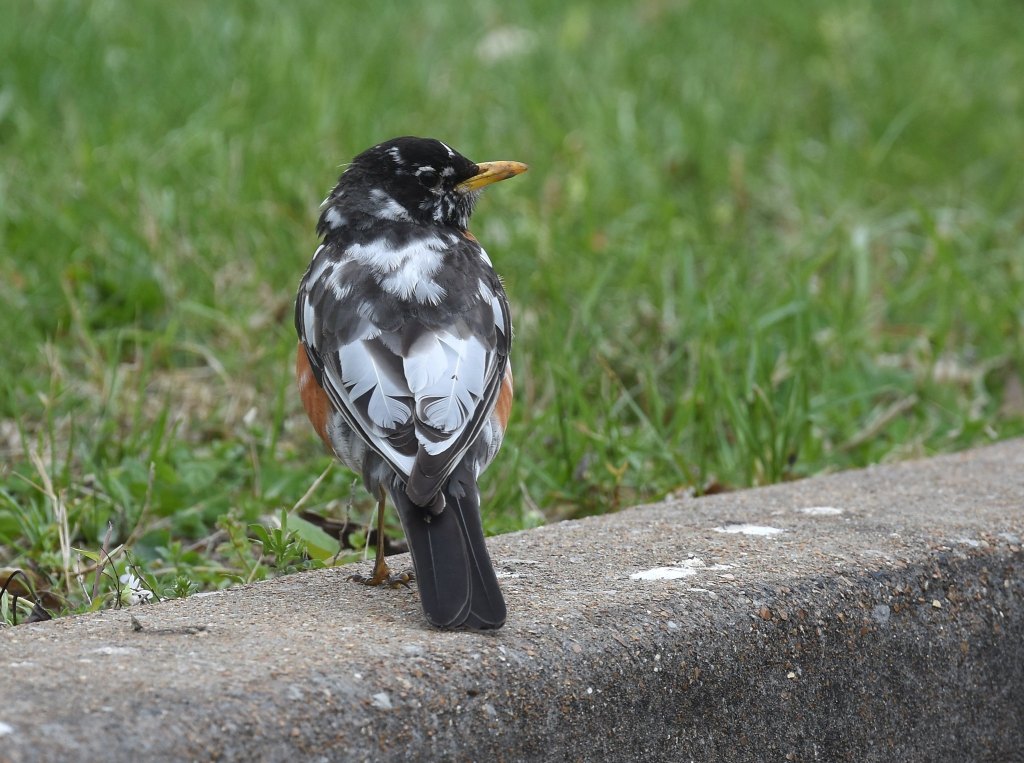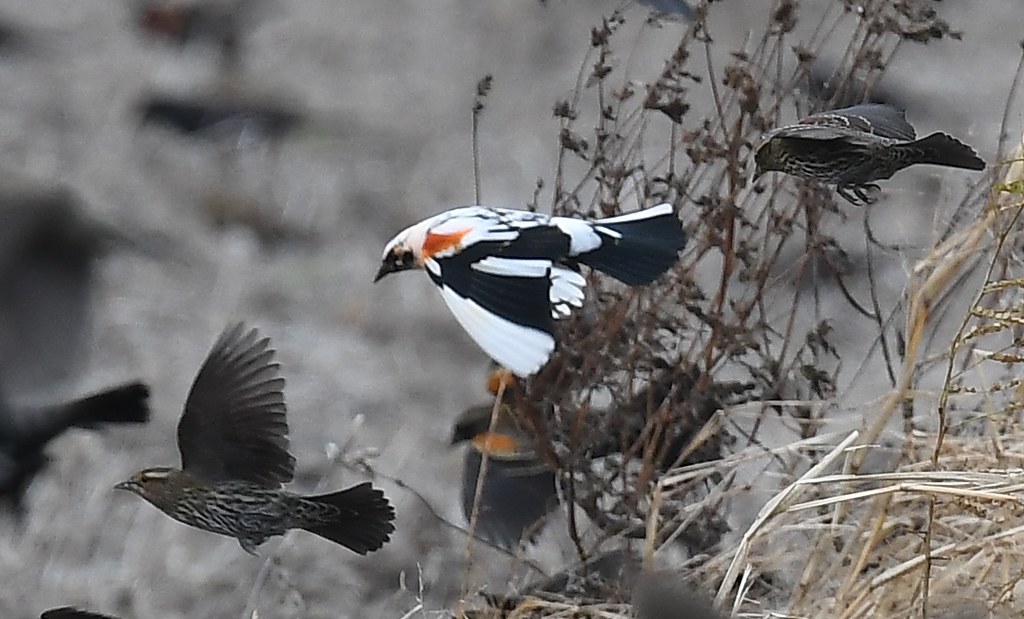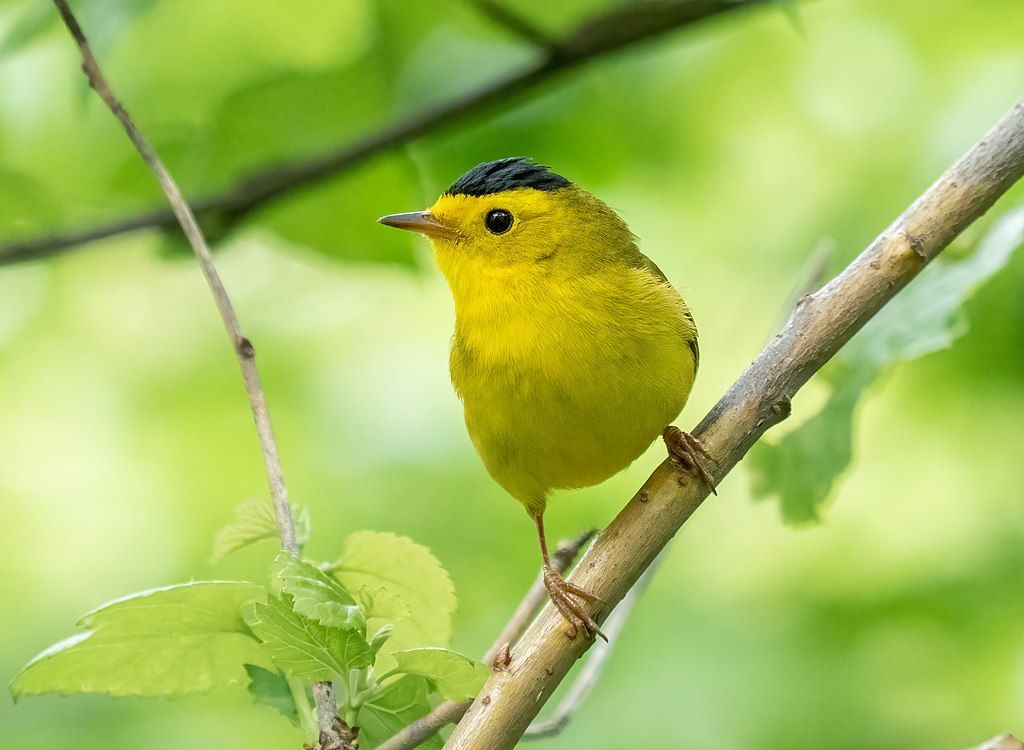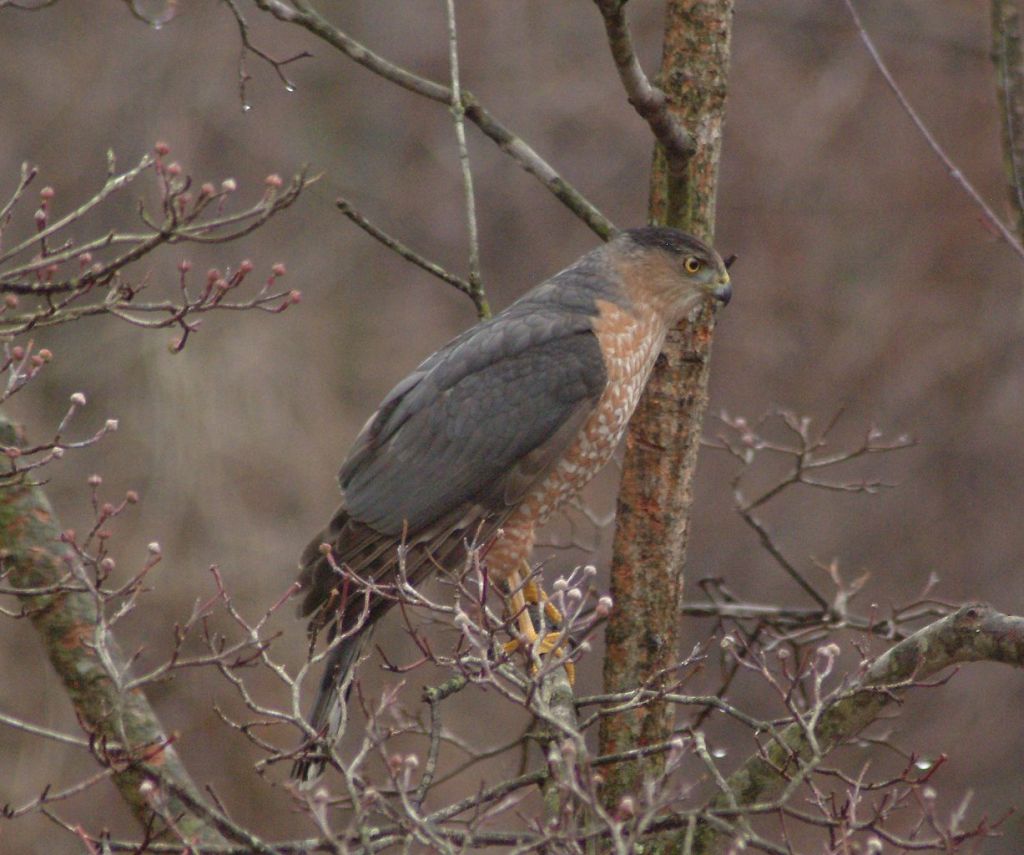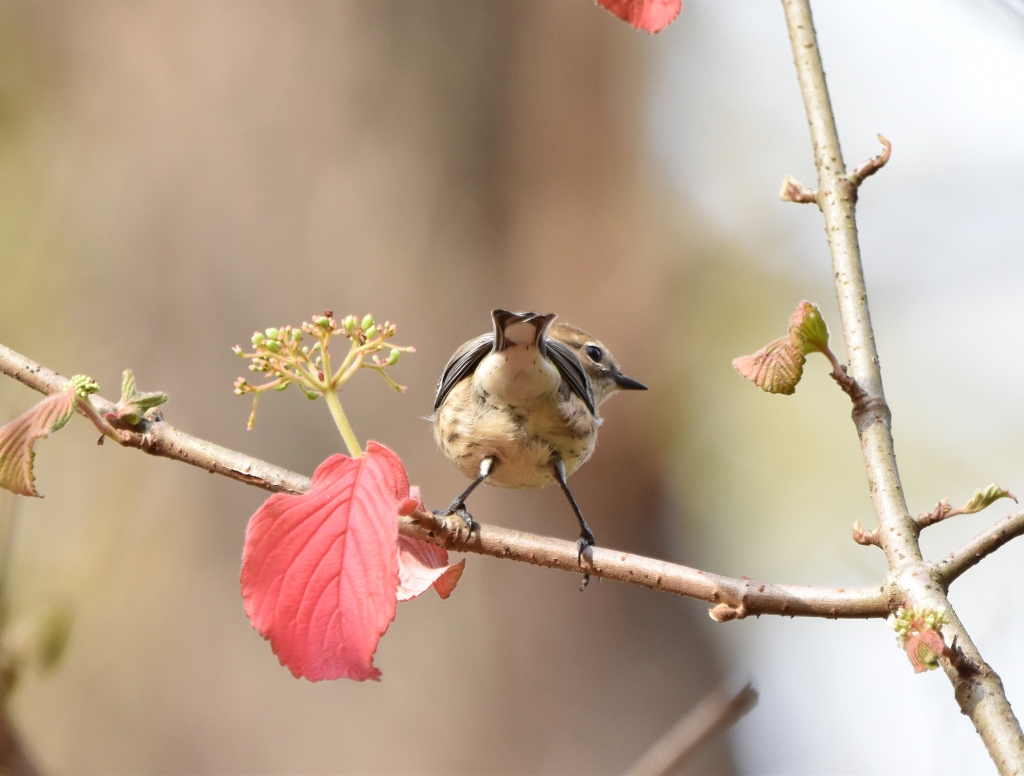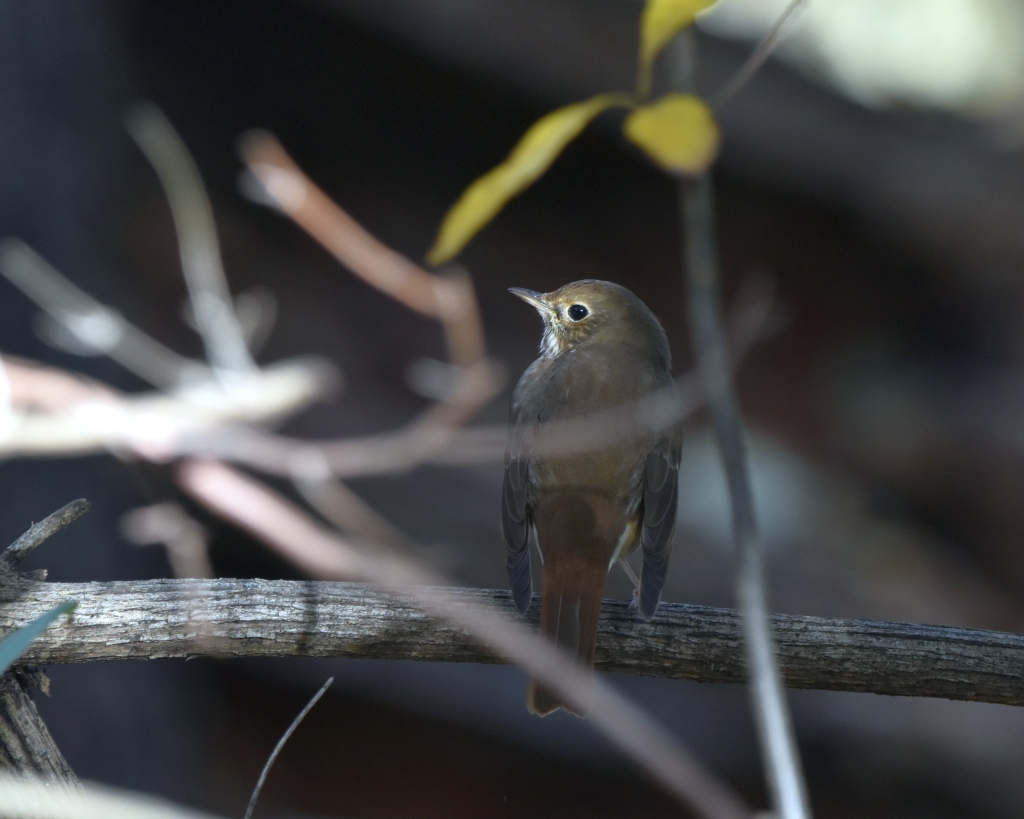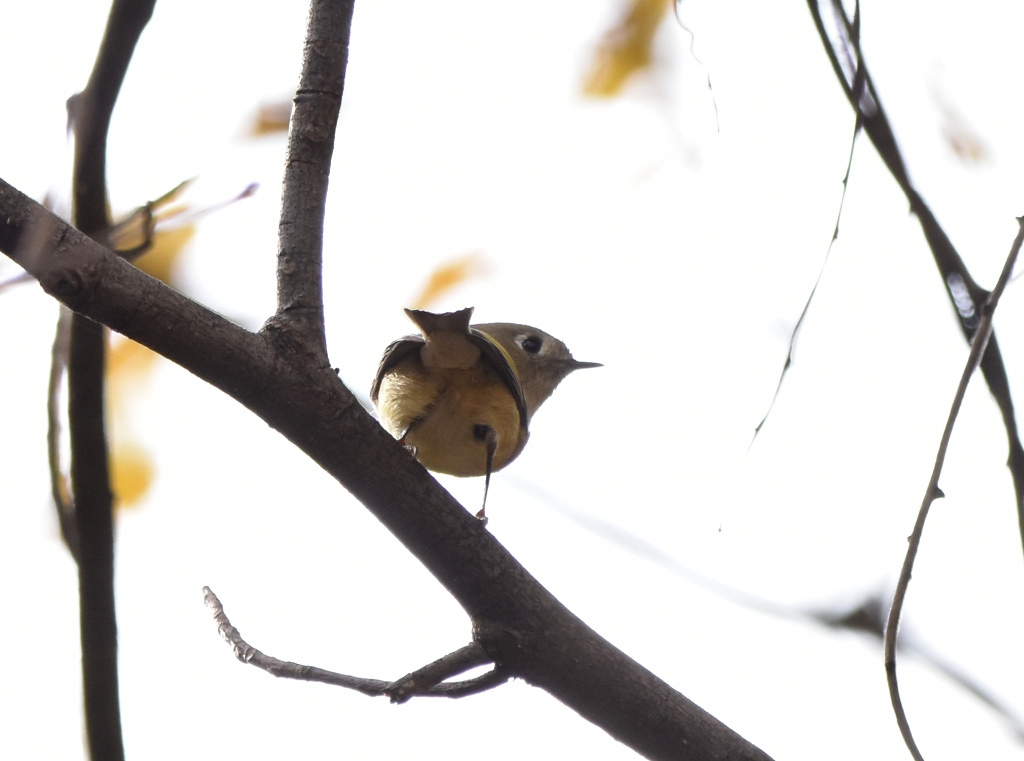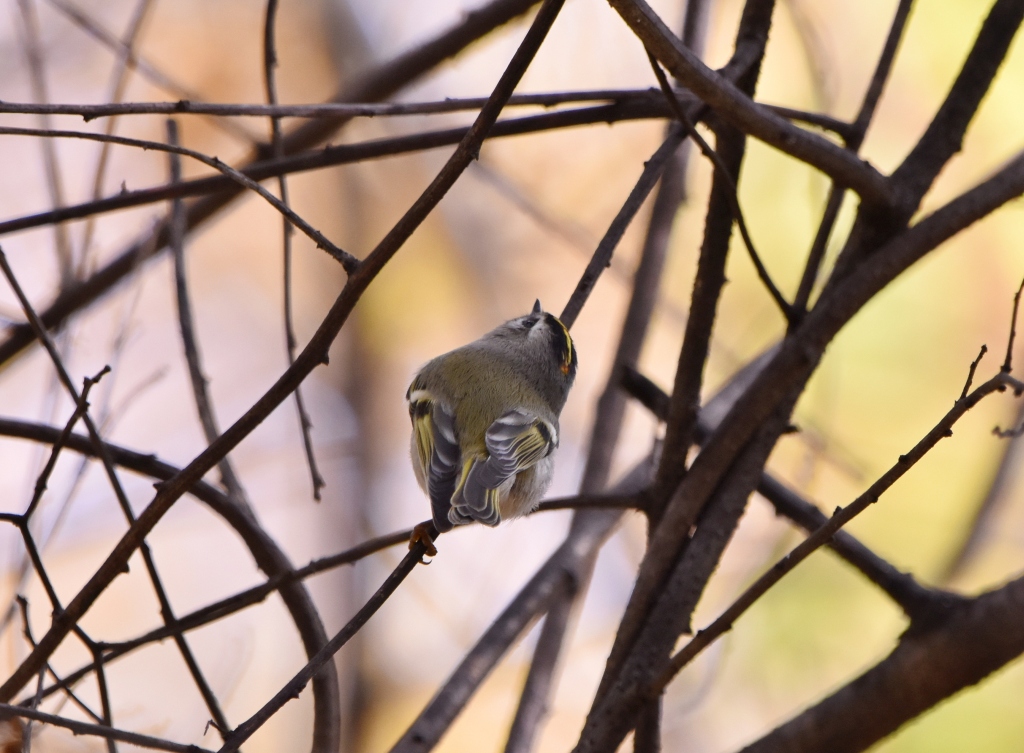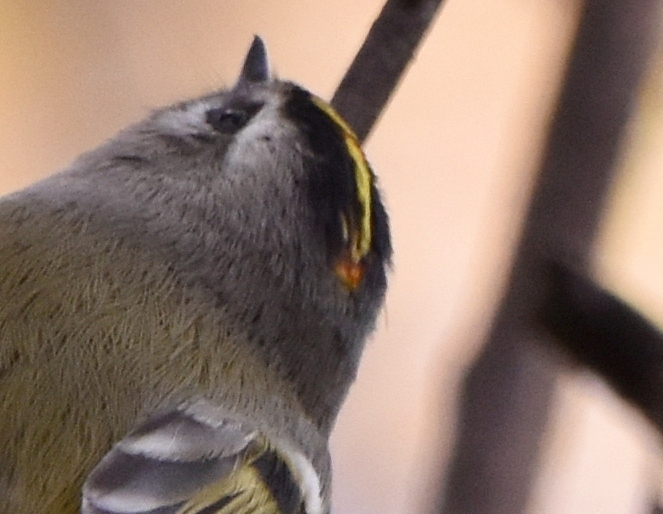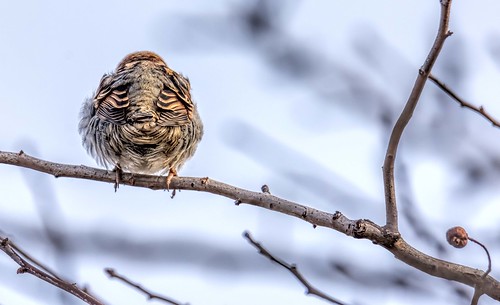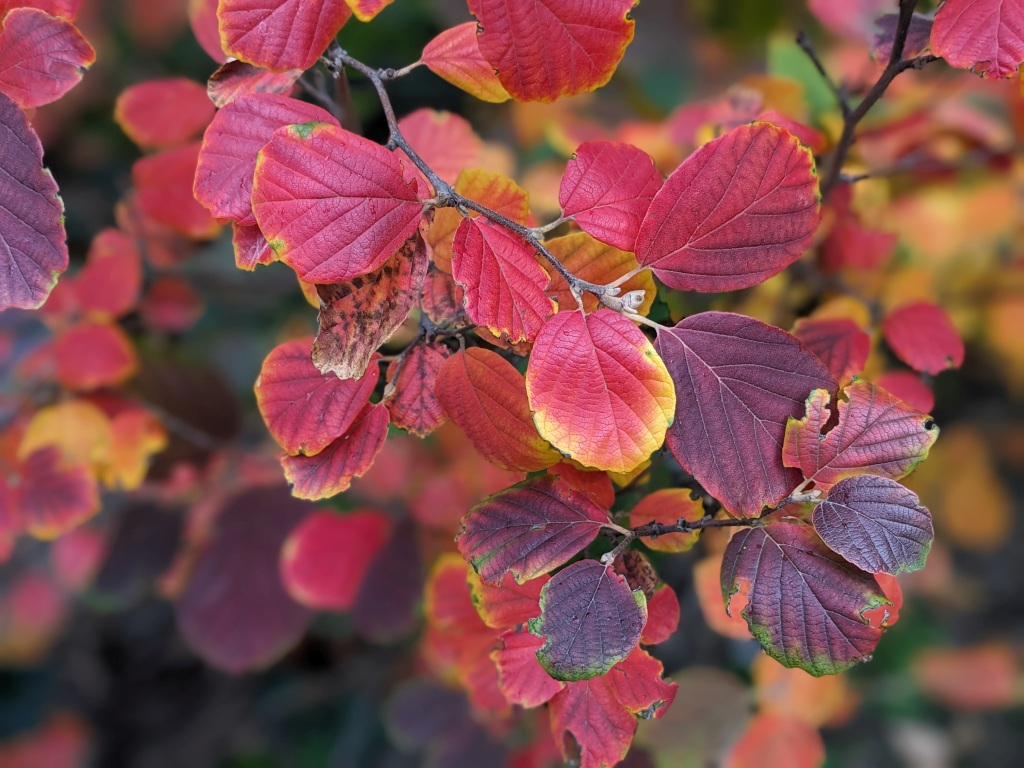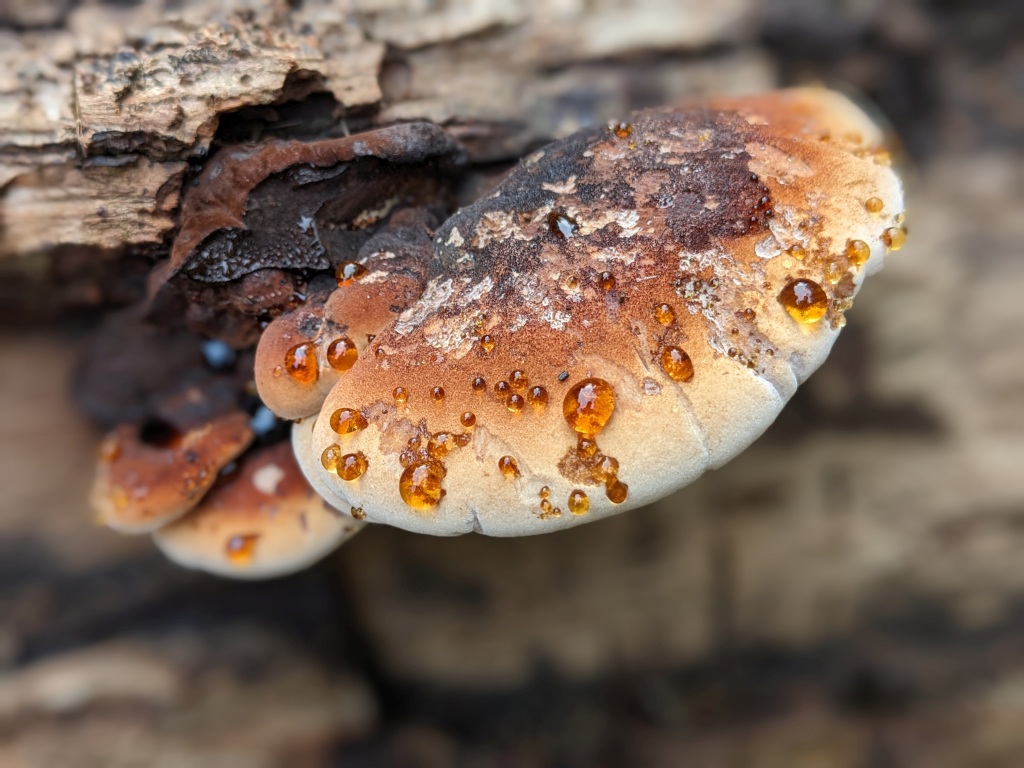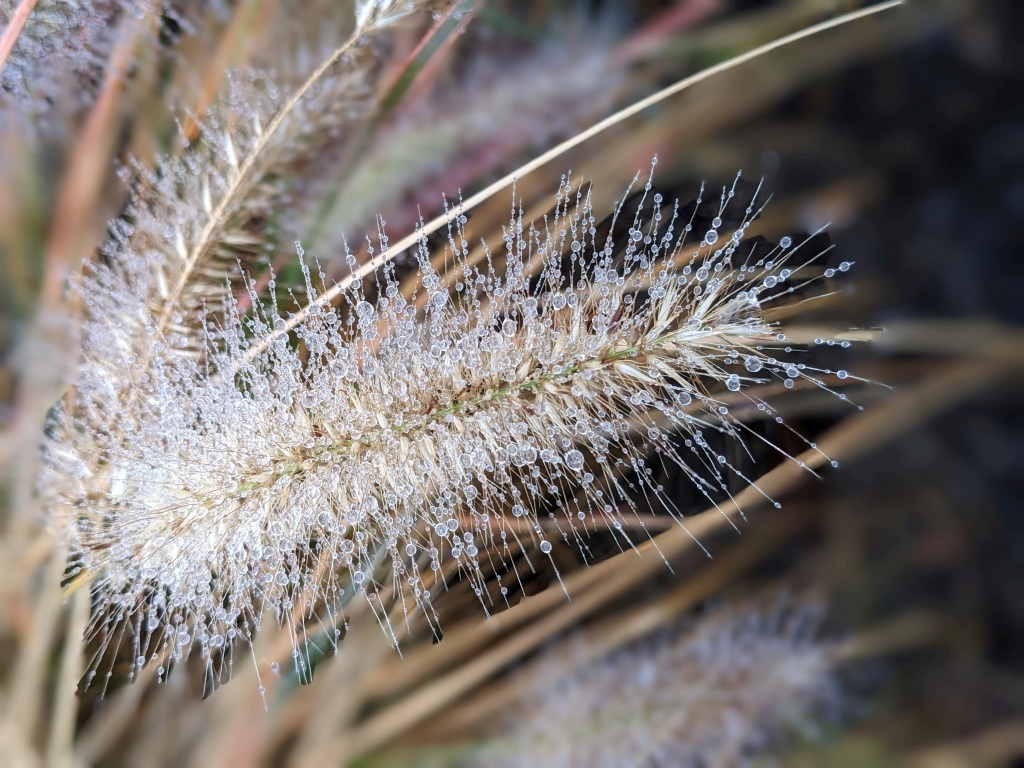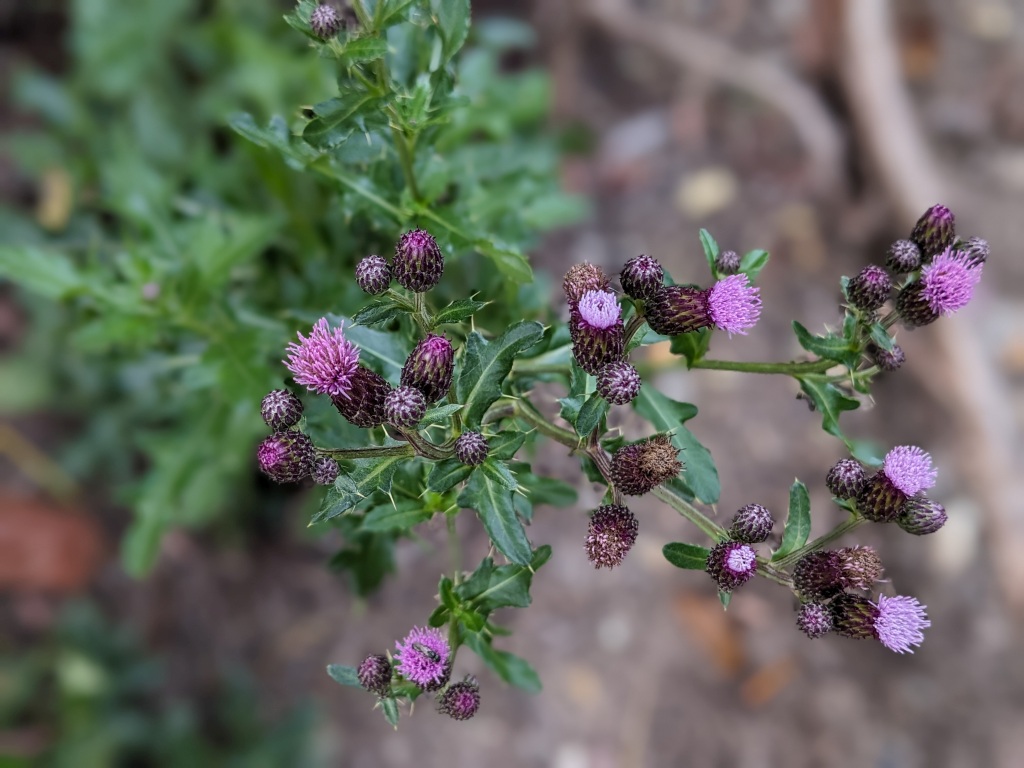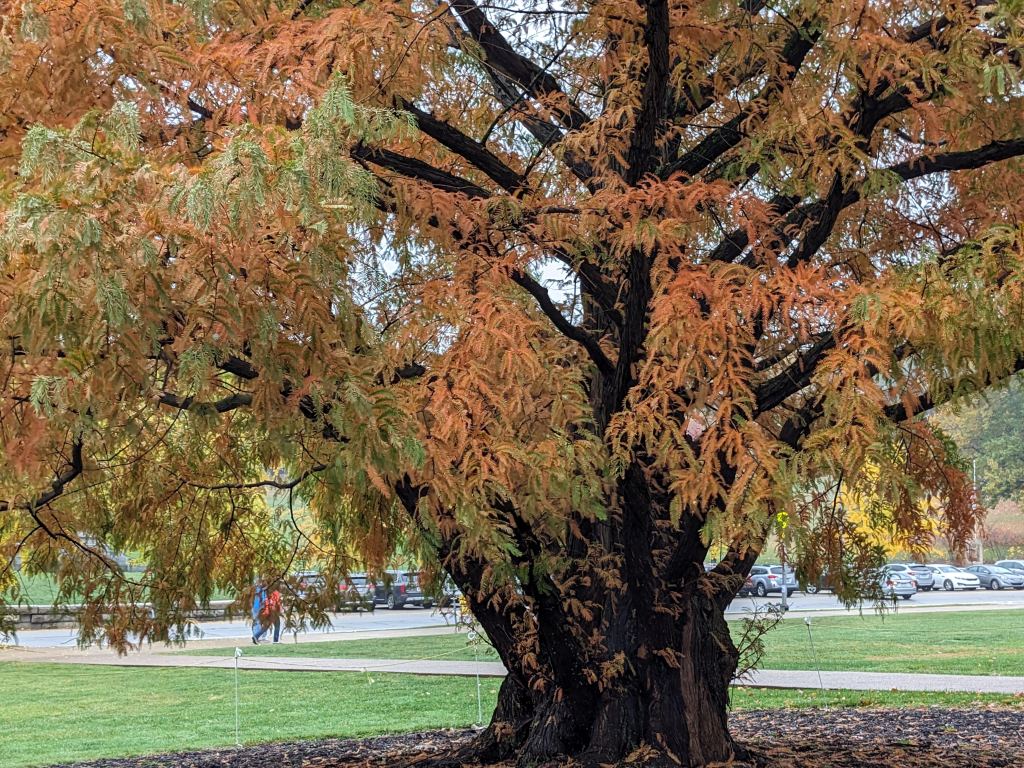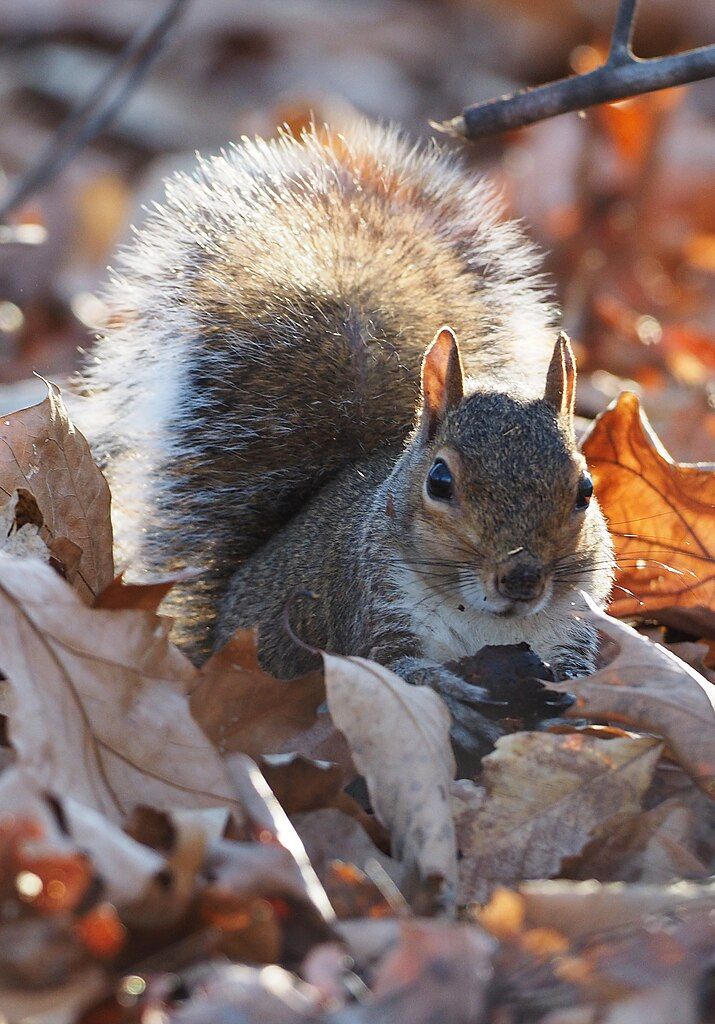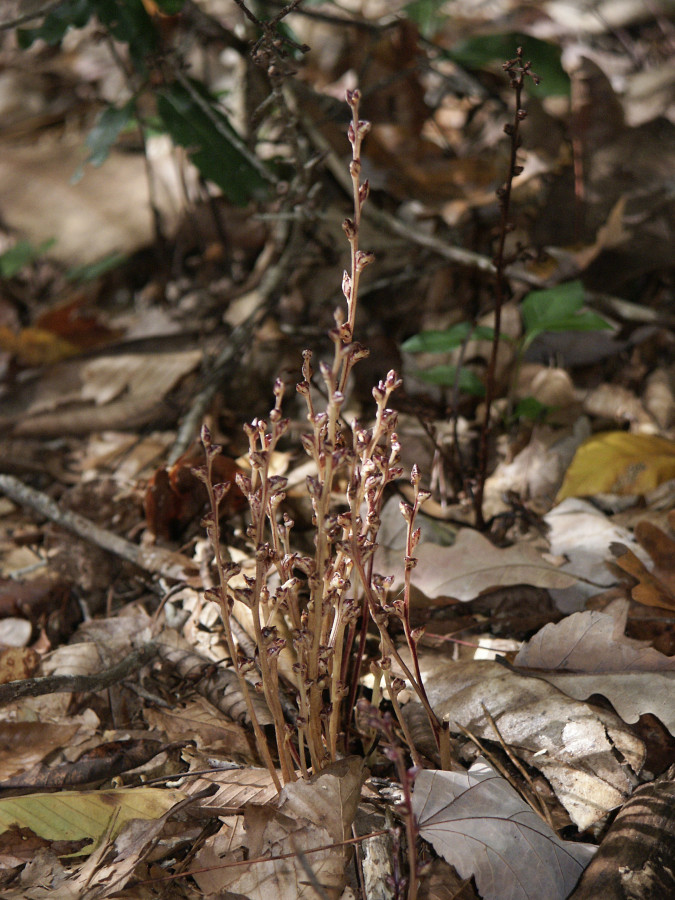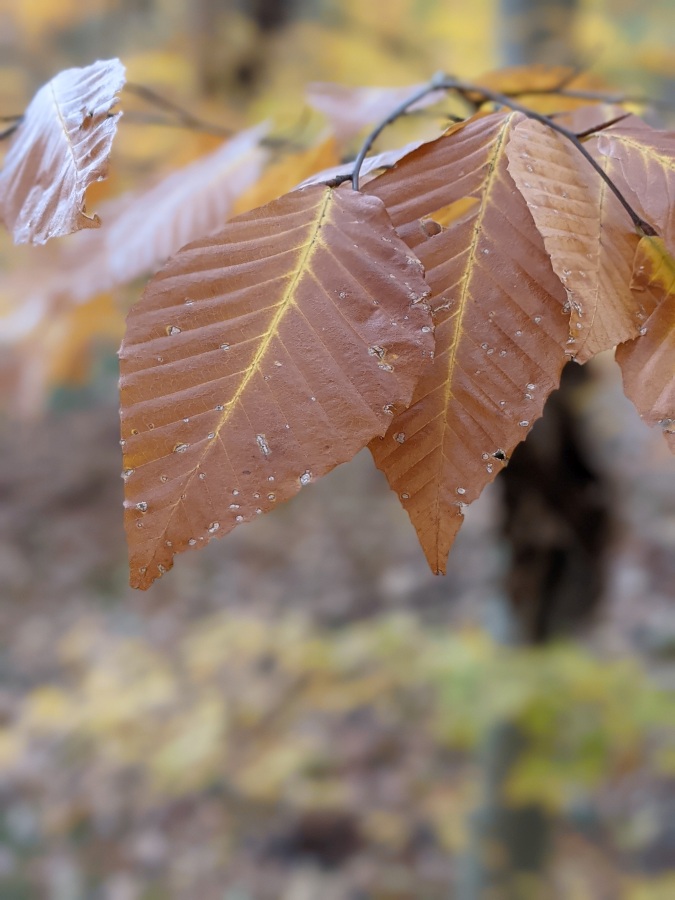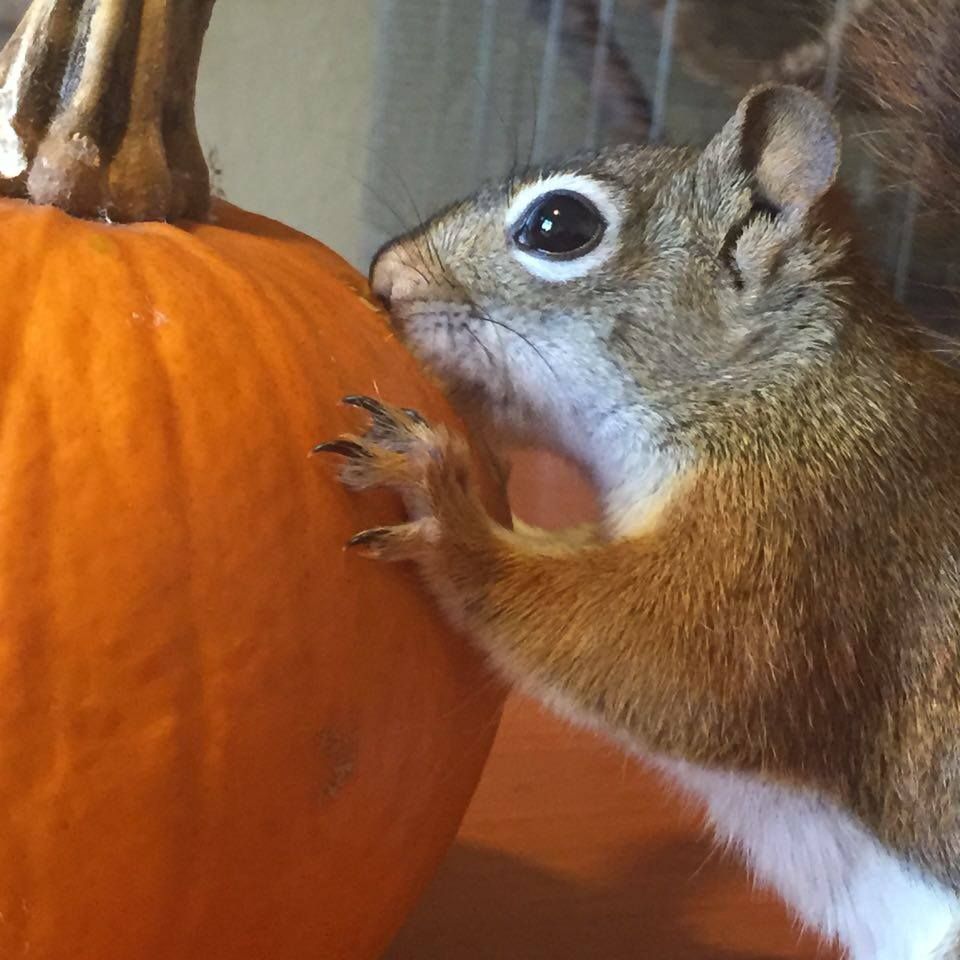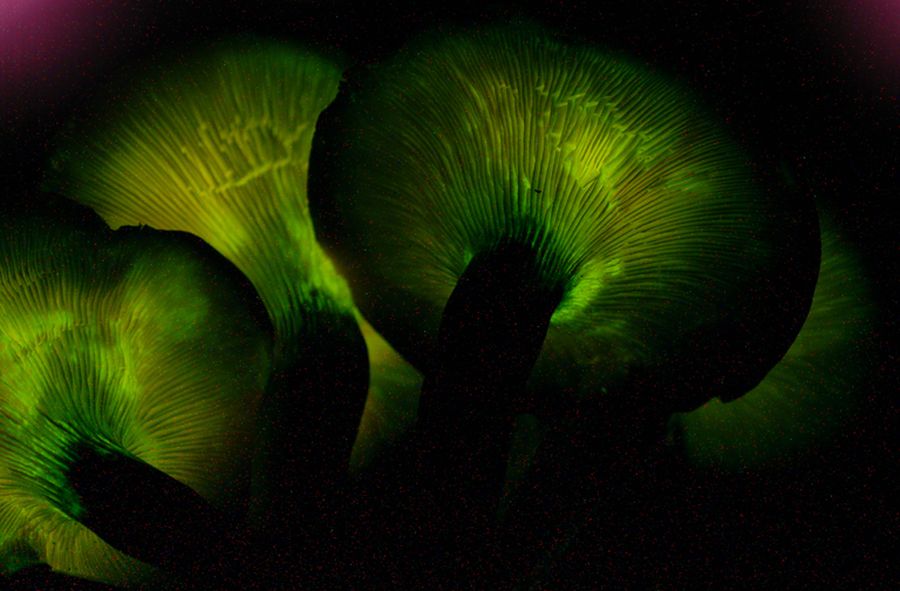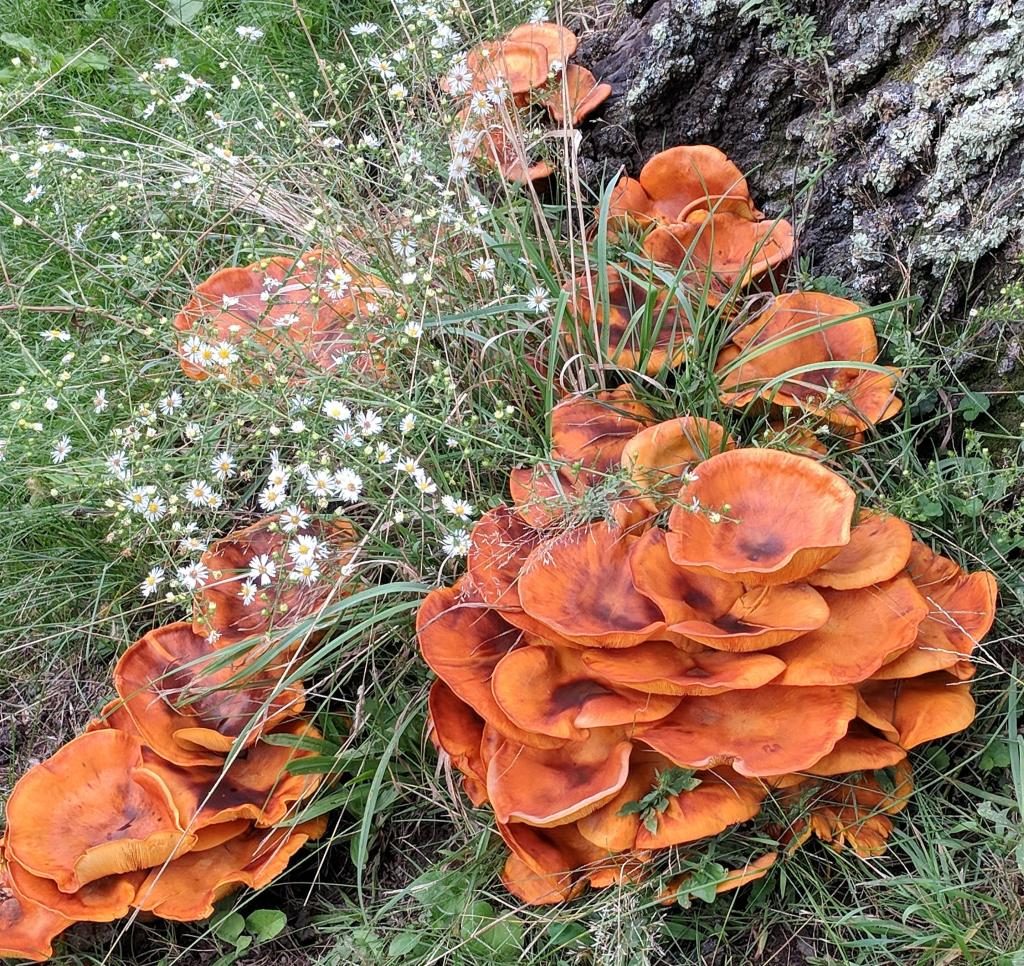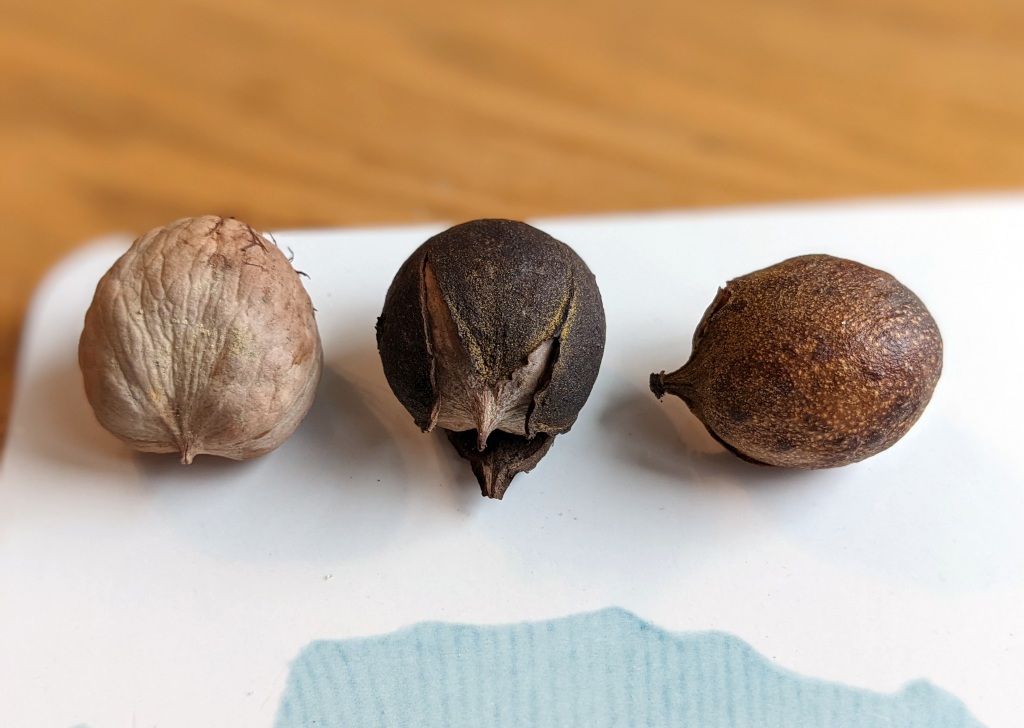
8 November 2023
The Nutty Series: Bitternut Hickory & Butternut
Though their names differ by only one letter bitternuts and butternuts are not the same at all.
Bitternut hickory (Carya cordiformis) is one of the most common hickories in southwestern Pennsylvania and easy to identify by its slender sulfur-yellow buds.
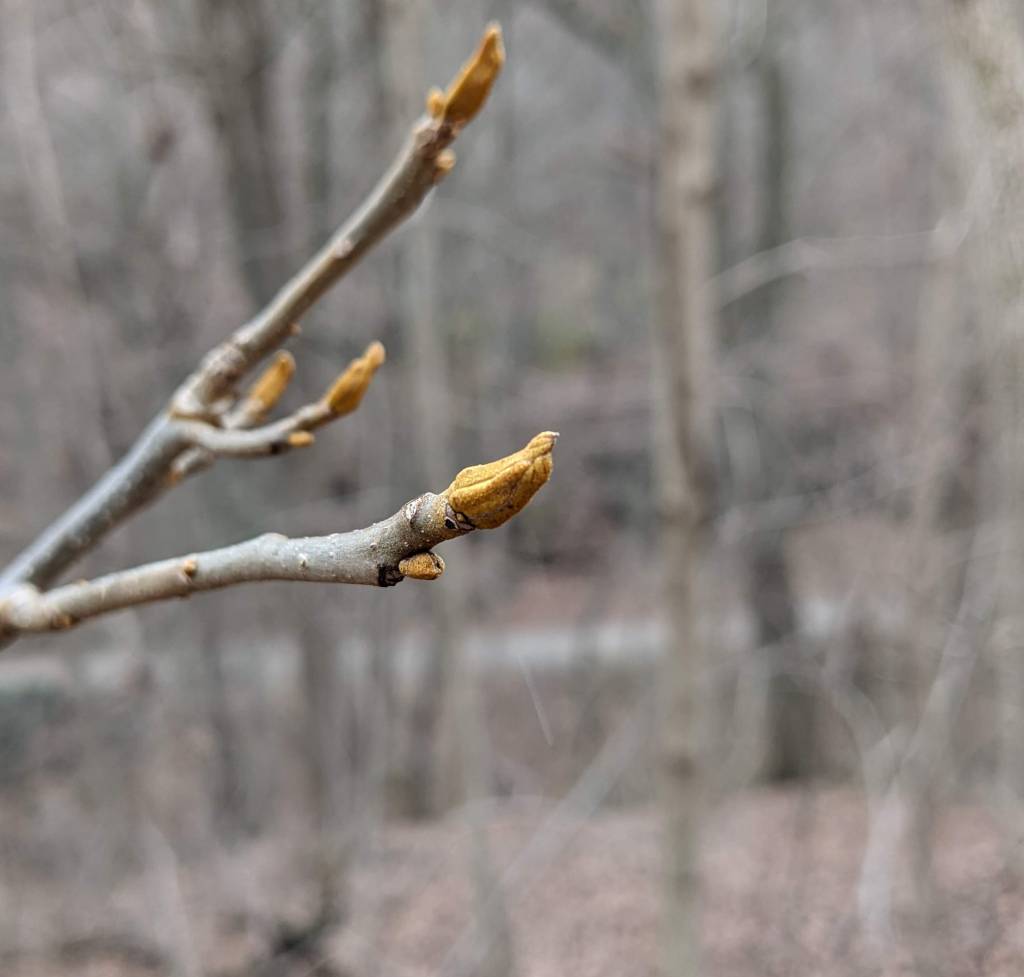
Bitternuts are closely related to pecans and also share the hickory genus with shagbark hickories, pignuts and mockernuts. Unlike the pecan the bitternut tree is rarely cultivated.
The fruit is a very bitter nut, 2–3 cm (0.75 – 1.25 in) long with a green four-valved cover which splits off at maturity in the fall, and a hard, bony shell.
— Wikipedia: Bitternut hickory
The “green four-valved cover” turns brown after the nut lies around for a while (see middle nut at top) and indeed the shell is hard and bony. I had to use a hammer to open this one and damaged the perfect nutmeat in the process. You’ll have to imagine it was shaped like a short squat pecan.
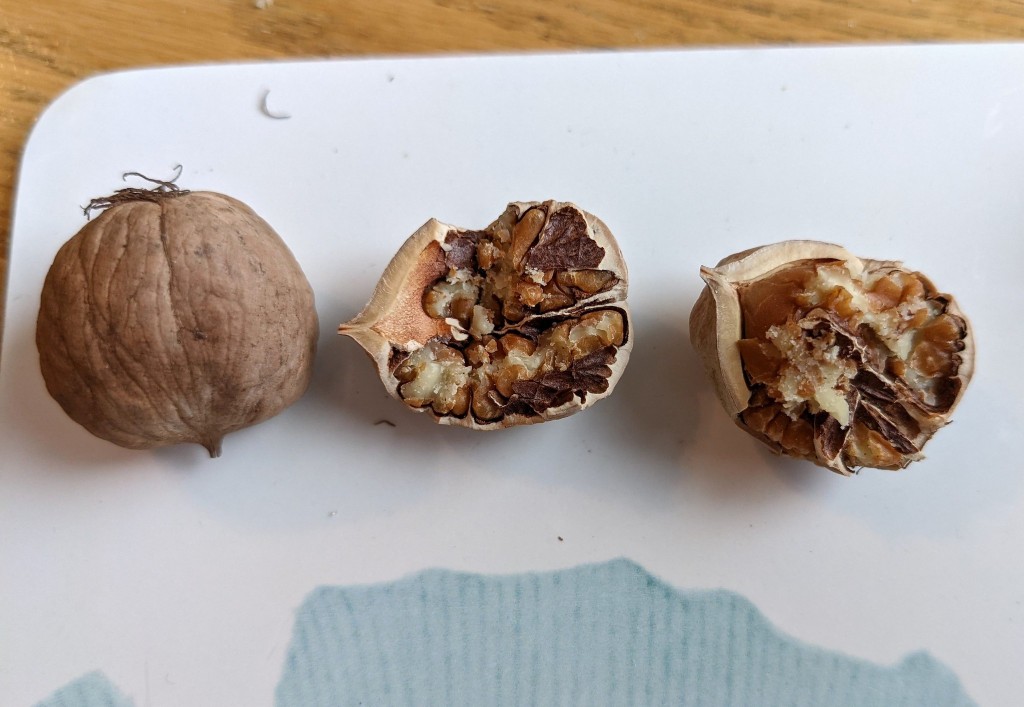
I can tell you from taste-testing that the nut is bitter and astringent. Squirrels avoid these nuts though Wikipedia says that rabbits eat them.
Butternuts (Juglans cinerea), on the other hand, are prized because the nuts taste good.
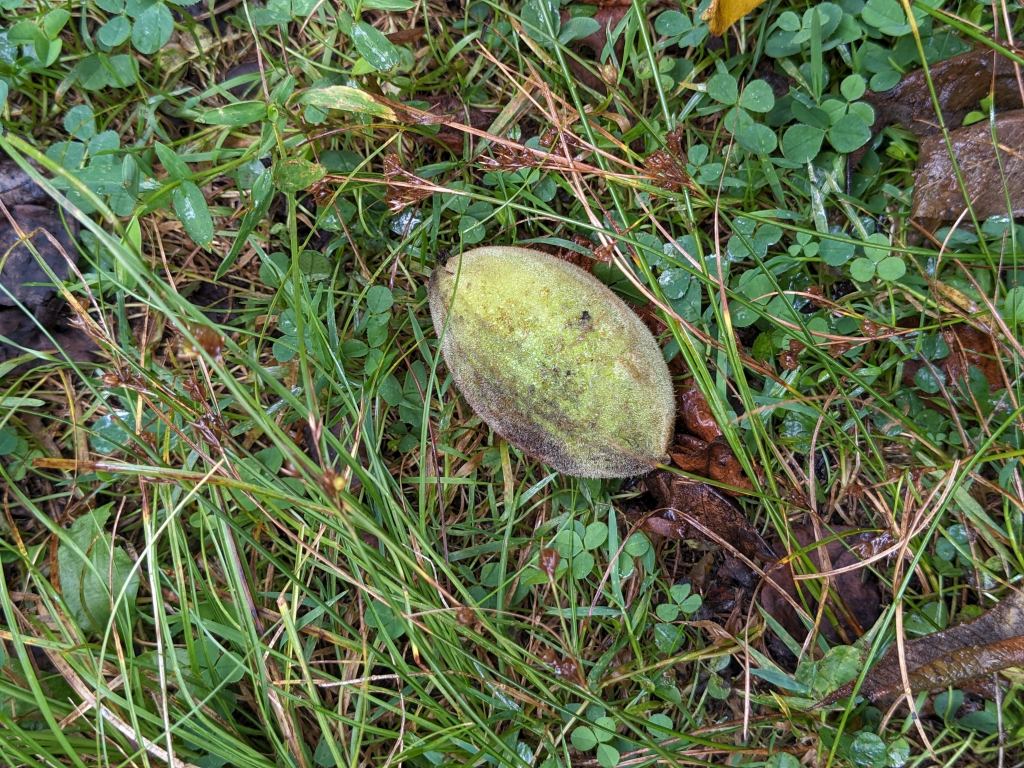
Butternuts are in the same genus as black walnuts and sometimes called “white walnuts.” The leaf arrangement is so similar that I didn’t realize that I was looking up at a butternut tree — to see warblers — until I saw the nuts on the ground.

Notice how similar the husks are: butternut on the left, black walnut on the right below. The butternut husk is oblong and fuzzy.
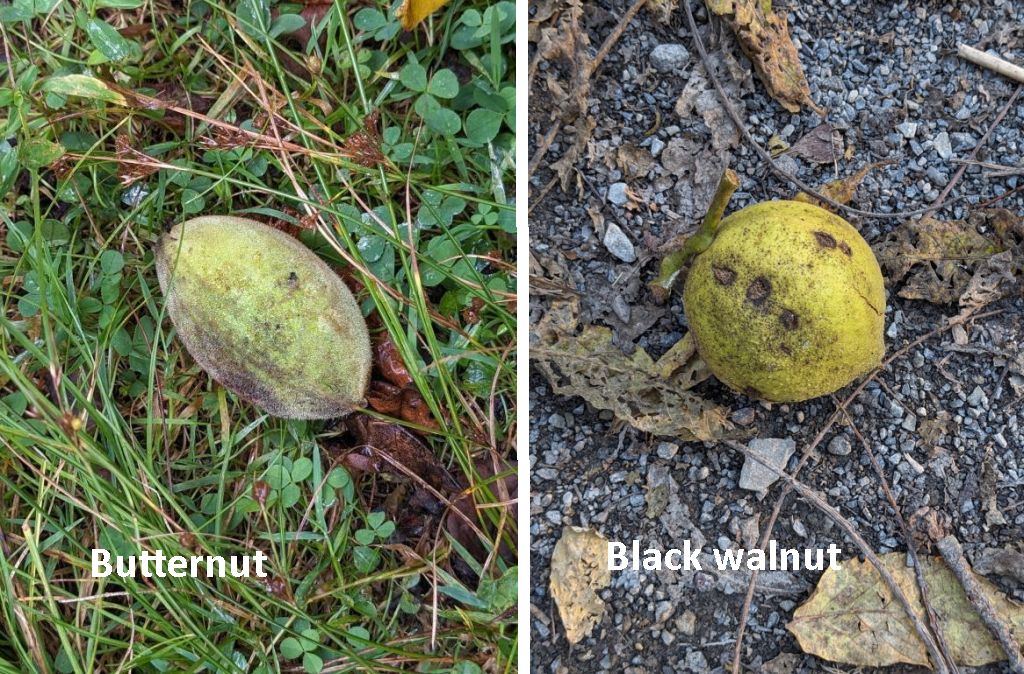
As the husk deteriorates (at left) the lumpy nutshell is revealed.
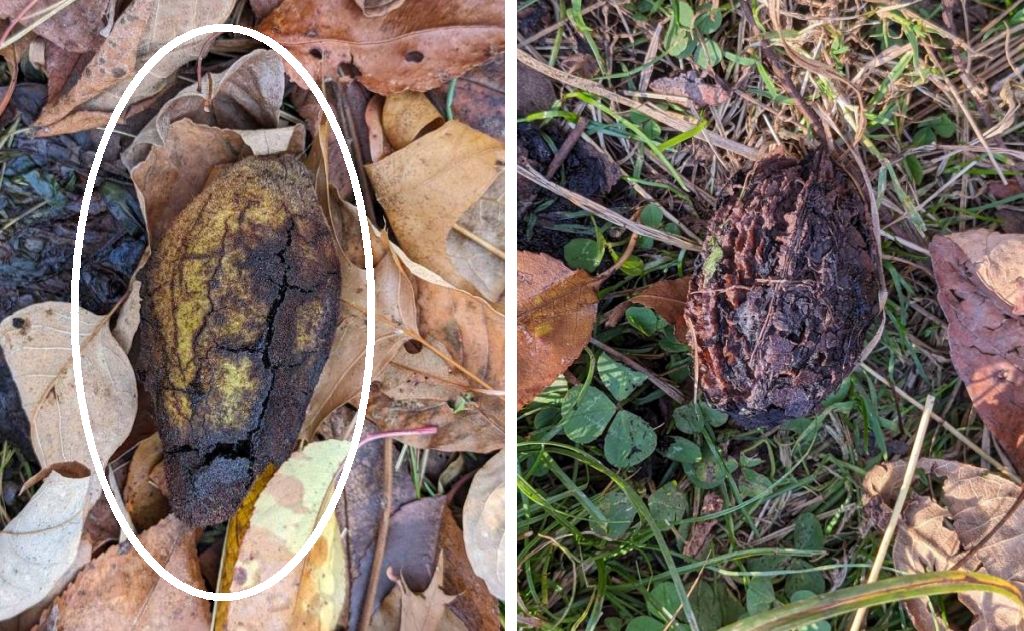
A cross section of the nut shows the rough exterior and nutmeat inside.
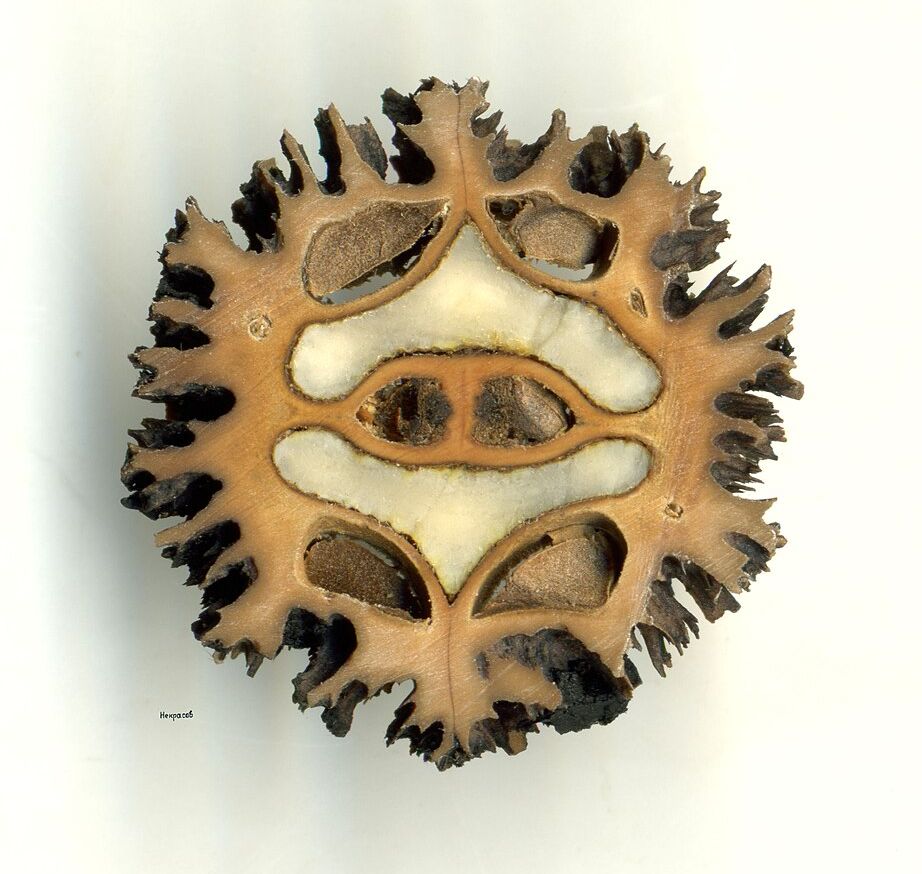
The butternut’s natural range runs from Maine and southern Ontario to southeastern Missouri and is smaller than the bitternut hickory’s. While the bitternut thrives, the butternut is declining and listed as threatened in some U.S. states and endangered in Canada. Its biggest threat is a fatal disease, butternut canker, caused by a fungus imported with the Japanese walnut. Ironically butternuts are partly threatened by too-easy hybridization with Japanese walnut trees.
Like black walnuts, butternuts are shade intolerant and thrive only when they’re at the top of the canopy or in an open space. Now that I know what a butternut looks like, I’ll pay more attention.
(credits are in the captions)
